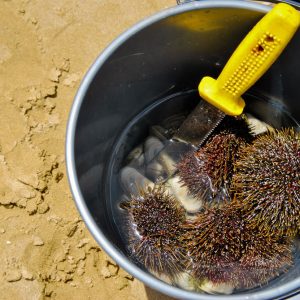It’s almost a year since the High Court declared the Minister’s 2021 and 2022 decisions for the future management of Northland crayfish (CRA 1) were unlawful. The Court directed the Minister to review CRA 1 again. That review occurred earlier this year and the outcome was underwhelming.
Firstly, Fisheries New Zealand (FNZ) provided the Minister with four options, the status quo or cut the Total Allowable Catch (TAC) by 6, 11 or 22 percent. We objected to this low-ball approach because each option was modelled to increase the crayfish population size by only one to four percent. An increase of this size is imperceivable by humans, and marginal for improving the ecosystem. And very disappointing given that our team has put so much work into this process and the legal proceedings.
The Minister’s March decision followed FNZ advice. There is no indication that they considered our proposal to split the CRA 1 area at North Cape, to enable finer scale management of catches. Yet the results of a January survey of over 500 Northland crayfishers showed the majority of respondents supported a package that included conservative catch limits and a reduced recreational daily bag limit for the next five years, to contribute to a significant rebuild of the Northland cray fishery.
The outcome after four years of reviews is a 37% reduction to the Total Allowable Catch (TAC) from 2020, and a 56% reduction to the overall recreational allowance. The recreational daily bag limit has been reduced from six to three spiny rock lobster.
A large part of the High Court decision was based on the evidence showing a proliferation of kina barrens. These occur as a result of harvesting large predators such as snapper and crayfish, which help to keep kina numbers in check. Large populations of kina in an area devour productive kelp forests and this results in a degraded environment, and a loss of biodiversity and habitats for other species.
LegaSea’s parent body, the New Zealand Sport Fishing Council, contributed to the arguments put to the Court so it’s really disappointing that FNZ managed to cover the gaps in previous advice to the Minister without really engaging in the substance of the Court’s decision.
In our view, the Minister’s latest decision doesn’t comply with the Court’s directions. It fails to take into account the impacts of fishing on the crayfish population, on non-target species such as kina, and the wider effects of fishing on the marine environment including kina barrens.
The Court ruled that if there was any doubt about the available information, the Minister must make a precautionary decision.
If we want an abundance of crayfish and a thriving marine environment to sustain future generations there must be a change in applying the purpose and principles of the Fisheries Act beyond just an exercise in delay or avoidance.





